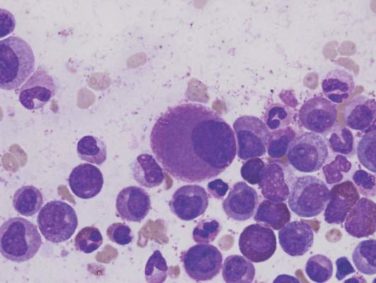FROM ARTHRITIS & RHEUMATOLOGY
As the incidence of Lyme disease rises in the United States, it is increasingly important for clinicians to be able to differentiate between people diagnosed with Lyme arthritis and those with systemic autoimmune arthritis following Lyme disease so that appropriate treatment with disease-modifying antirheumatic drugs is not delayed in those who need it, experts concluded from a new study of patients with a systemic autoimmune joint disease following Lyme disease.
“It is important for clinicians to be aware that a spectrum of infectious and autoimmune joint disorders may occur within the context of Lyme disease,” wrote Sheila Arvikar, MD, of the Center for Immunology and Inflammatory Diseases at Massachusetts General Hospital, Boston, and her colleagues.
In particular, clinicians need to distinguish between three potential scenarios: patients who may have active Borrelia burgdorferi infection in their joints, antibiotic refractory Lyme synovitis, or another form of autoimmune arthritis following Lyme disease.
“An important point for the clinician is that postinfectious joint disorders following recommended antibiotic courses for Lyme disease should be treated with DMARDs [disease-modifying antirheumatic drugs], rather than additional antibiotics,” the researchers wrote in a paper published in Arthritis & Rheumatology ( 2016 Sep 16. doi: 10.1002/art.39866 ).
This is particularly important given the growing body of evidence showing that the early aggressive treatment of inflammatory arthritis can lead to improved outcomes for patients. “Delays in appropriate DMARD treatment of autoimmune joint disorders by pursuing further antibiotic therapy may lead to poorer clinical outcomes,” they wrote.
The researchers conducted an analysis of all adults referred to their Lyme disease clinic over a 13-year period to tease out the key clinical and laboratory features that could be used by clinicians to distinguish between infectious or postinfectious Lyme arthritis and systemic autoimmune joint disease.
They identified a cohort of 30 patients with a systemic autoimmune joint disease following Lyme disease; 15 had rheumatoid arthritis, 13 had psoriatic arthritis, and 2 had peripheral spondyloarthropathy. The authors noted that 18 patients, or 60%, were seen at their clinic during the last 3 years. The researchers then compared these patients with a group of 43 patients with Lyme arthritis seen at their clinic between 2014 and 2015. They explored potential differences in laboratory features between the groups by measuring IgG antibodies to B. burgdorferi and to three Lyme disease-associated autoantigens: endothelial cell growth factor, apolipoproteinB-100, and matrix metalloproteinase-10.
Patients in the systemic autoimmune joint disorder group developed inflammatory disease a median of 4 months after Lyme disease, a time frame similar to when Lyme arthritis typically occurs following the Lyme disease manifestation of erythema migrans.
When the authors compared both groups of patients, they discovered that Lyme arthritis was typically characterized by monoarticular or oligoarticular involvement of large joints. Patients with antibiotic-refractory arthritis generally had one affected large joint, most often the knee, that had failed to respond to antibiotic treatment. In contrast, people with systemic autoimmune joint disease usually had polyarthritis and/or features of spondyloarthropathy.
Systemic autoimmune arthritis patients also had typical risk factors, such as family history of autoimmunity (P = .0004) or obesity (P less than .0006), compared with patients with Lyme arthritis. They were also much more likely to have had erythema migrans that had been treated appropriately with antibiotics, compared with patients with Lyme arthritis.
“It is very unlikely that a patient who develops polyarthritis after antibiotic-treated [erythema migrans] has [Lyme arthritis],” the authors wrote.
In regard to laboratory features, most systemic autoimmune arthritis patients had positive tests for B. burgdorferi IgG antibodies, but had significantly lower titers and lower frequencies of Lyme-associated autoantibodies, compared with patients with Lyme arthritis.
Patients with systemic autoimmune joint disease also usually had higher erythrocyte sedimentation rate levels and C-reactive protein values (P = .02), compared with patients in the Lyme arthritis group.
While clinicians could use these clues to identify and treat patients appropriately, the authors conceded that there were still some patients for whom the distinction may be difficult. For example, any of the systemic autoimmune diseases may begin with oligoarticular involvement, they said.
Nevertheless, they concluded that “regardless of the whether the occurrence of systemic autoimmune joint disease following Lyme infection is coincidental, induced nonspecifically by adjuvant effects of infection, or related to specific Lyme disease–associated autoimmune responses, an important point for the clinician is that postinfectious joint disorders following recommended antibiotic courses for Lyme disease should be treated with DMARDs, rather than additional antibiotics.”
Dr. Arvikar is supported by a postdoctoral fellowship from the Rheumatology Research Foundation. One coauthor reported receiving support from the National Institutes of Health and several research foundations.





